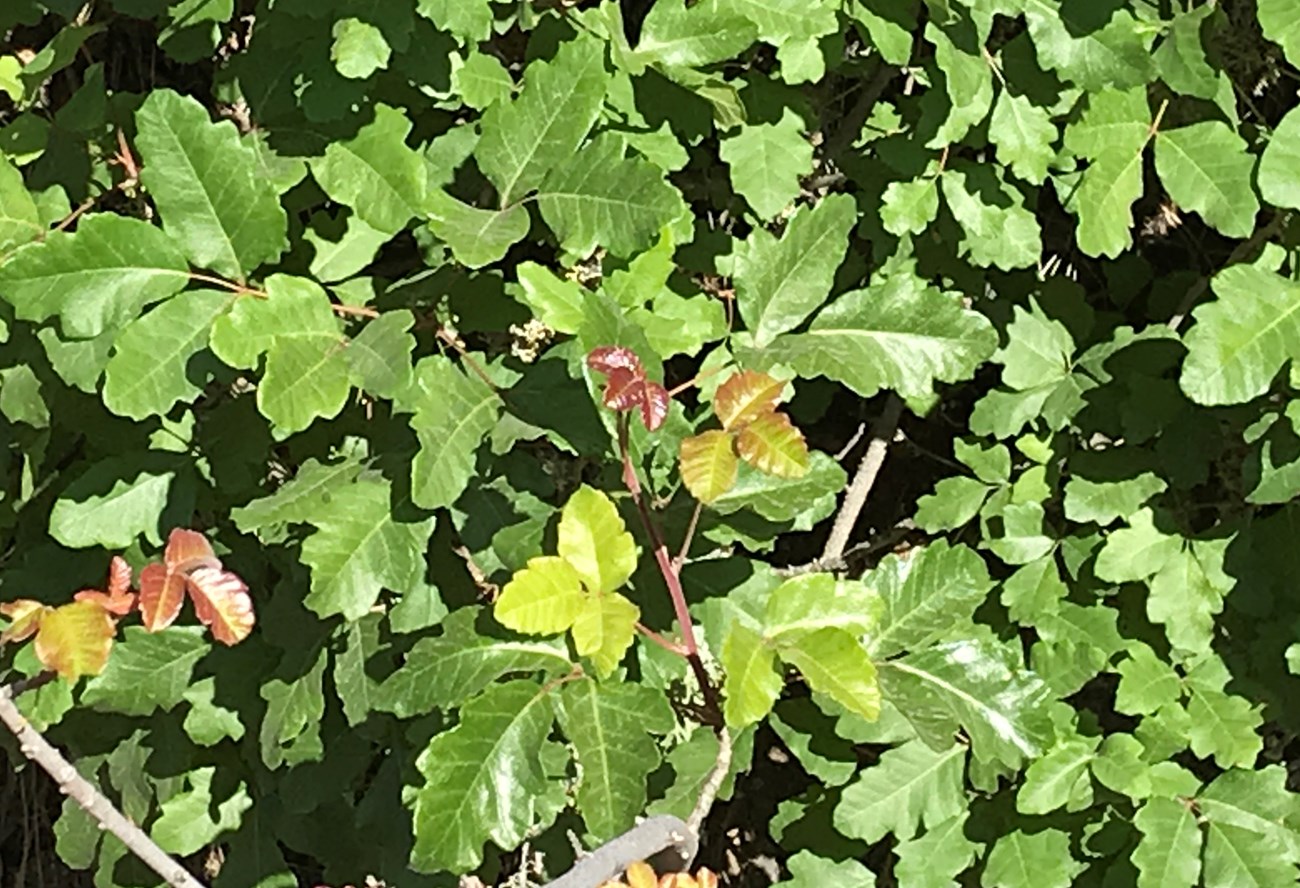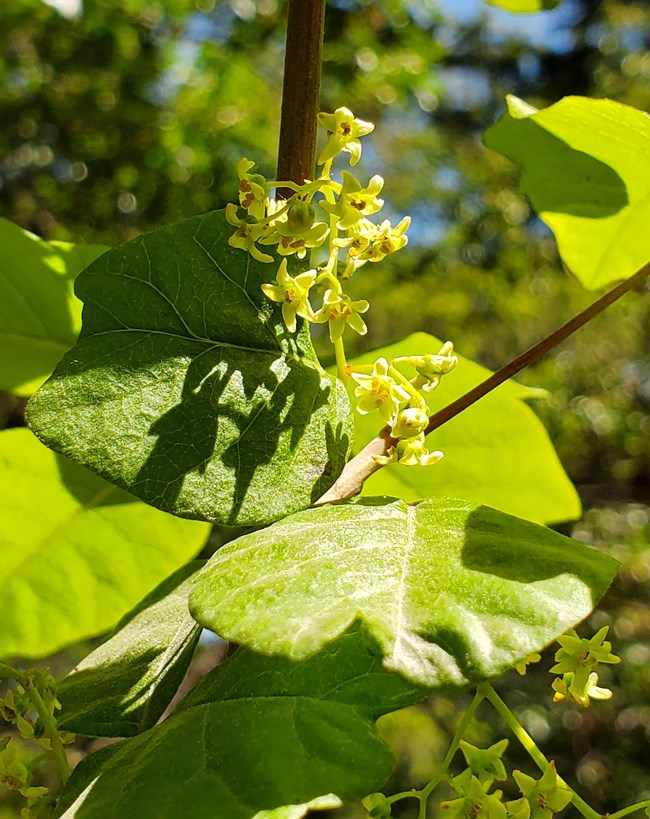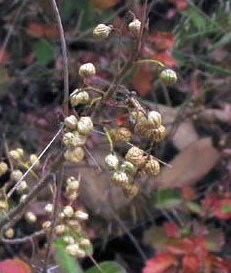Last updated: May 28, 2020
Article
Pacific Poison Oak

Sonya Daw
General Description
My evening walk through the nearby grassy oak woodlands has taken its predictable late spring turn. No more careless plowing along the trail with eyes trained upwards for birds. I now pick my way carefully around and over the new growth of trailside poison oak, sometimes requiring extreme body contortions. Remember the game, Twister?
Toxicodendron diversilobum, otherwise known as Pacific or western poison oak, is a perennial, deciduous shrub—sometimes growing as a vine—that dons its leafy cloak in February and March. Its stems grow quickly over the next 2 months, innocently dangling over your favorite trail. New leaves are shiny and reddish, maturing into green for the summer and back to yellow or scarlet red before dropping in the fall. The leaves are lobed, from 2 to 15 cm (1–6 in) long, and typically arranged as 3-leaflets on stems (“leaves of three – let it be”) that grow alternately from the branch. Some stems, however, have up to 5, 7, or even 9 leaflets.
Poison oak is not an oak at all, though its leaves resemble the white oak. Rather it is in the sumac, (or cashew) family, Anacardiaceae. Pacific poison oak and its close cousin, western poison ivy (Toxicodendron rydbergii) both have the allergen, urushiol oil, that causes contact dermatitis (an itchy rash) in most people. The oil is present year-round, even on bare branches in the winter. Pacific poison oak grows in the coastal Pacific Northwest and California, while western poison ivy tends to grow further inland, though their ranges have some overlap and hybrids have been found. Poison oak leaves have more rounded and irregular lobes than poison ivy leaves, which have pointed tips and are not distinctly lobed. The genus Toxicodendron includes eastern U.S. species of both poison oak and poison ivy, as well as poison sumac.
Habitat and Range
Pacific poison oak is native to the Pacific Northwest, from British Columbia down through California. It grows below 1500 m (5000 ft) in mixed evergreen forests, woodlands, chaparral, and riparian areas in both sun and shade. Shady areas favor its vine form, while full sunlight favors dense shrub thickets.
Ecology
Poison oak is a resilient, native shrub valuable in many ways to its plant and animal community, despite our unhappy, itchy relationship with it. Birds, particularly the California towhee, but also American robins, catbirds, and grosbeaks forage on its berries, spreading its seeds through their droppings. Birds also dine on insects hidden in poison oak vines. Its dense foliage has been known to support nests of the endangered least Bell’s vireo, and one study highlighted its importance to bird abundance and variety in cottonwood/poison oak woodlands along the Sacramento River in California. Because the urushiol oil does not affect wildlife as it does humans, ungulates, like black-tailed deer and livestock, can browse its nutritious leaves, as can small mammals, which also shelter in its thickets.
Poison oak is a pioneer species, readily sprouting in disturbed areas, such as in recent burns. By stabilizing newly disturbed soil, it paves the way for other plants to establish—a process known as succession.

Charles Schelz
Reproduction
Poison oak has two different strategies for reproduction. It can sprout vegetatively from rhizomes (stems just under the soil surface that can grow roots) and from its root crown, or it can sprout from seed. Pacific poison oak blooms from March to June, forming small half-centimeter-sized, star-shaped, greenish-white flowers. Male and female flowers look similar but typically grow on different plants, making this species “dioecious.” Later in the summer the flowers mature into round, greenish-white globe-like fruits that persist through fall and into winter.

NPS/Santa Monica Mountains NRA
Relationship with Humans
Most humans will break out into an itchy red rash within hours to a few days after contact with the urushiol oil in poison oak. It’s actually quite potent, even in small doses. The reaction tends to get worse with increasing exposure and is particularly dangerous if triggered by inhaling the smoke of burning poison oak. Despite this, parts of the poison oak plant were reportedly valued by some Native American tribes of California, including the Chumash Indians, for uses as varied as to remove warts and calluses, stop bleeding, treat dysentery, weave baskets, and for tattooing.
Where to See
Within Klamath Network parks, Pacific poison oak grows in Oregon Caves NMP, Redwood NSP, and Whiskeytown NRA.
Learn More
http://nativeplantspnw.com/poison-oak-toxicodendron-diversilobum/
https://www.elkhornslough.org/poison-oak/
Download a pdf of this article
Prepared by Sonya Daw
NPS Klamath Inventory & Monitoring Network
Southern Oregon University
1250 Siskiyou Blvd
Ashland, OR 97520
Featured Creature Edition: May 2020
